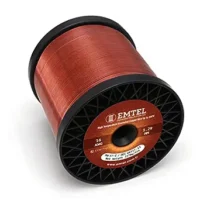Are you looking for innovative ways to enhance your gardening practices? Look no further than electroculture gardening techniques. Electroculture is a method that utilizes electrical stimulation to improve plant growth and yield. It harnesses the power of electromagnetism to optimize soil fertility, increase crop productivity, and promote sustainable farming practices.
In this article, we will provide an in-depth exploration of electroculture gardening techniques. We will delve into the principles and science behind electroculture, examine its benefits, and discuss how to implement these techniques in your own garden. Whether you’re a seasoned gardener or just starting out, electroculture can revolutionize your gardening experience.
Key Takeaways:
- Electroculture gardening techniques utilize electrical stimulation to enhance plant growth and yield.
- Electroculture techniques promote sustainable farming practices and align with regenerative agriculture principles.
- Implementing electroculture in your garden can improve soil fertility, increase crop yields, and promote overall plant health.
- Electroculture systems and technologies, such as electromagnetic field technology, are available for gardening purposes.
- Real-life case studies and success stories demonstrate the effectiveness of electroculture techniques in improving crop yields and plant health.
Understanding Electroculture Principles
Electroculture is a gardening technique that harnesses the power of electrical stimulation to enhance plant growth and yield. By understanding the principles behind electroculture, gardeners can unlock the potential for healthy and thriving plants.
Electrical Stimulation and Plant Growth
At the core of electroculture principles is the idea that electrical stimulation can positively impact plant growth. Plants have been observed to respond to electrical fields, which can influence various physiological processes and promote overall plant health.
“Electro-stimulation is a promising technique that can significantly enhance plant growth and yield. By applying controlled electrical fields, we can stimulate specific plant responses, such as increased nutrient uptake and enhanced root development.” – Dr. Jane Miller, Plant Scientist
When electrical currents are applied to plants, they stimulate the movement of ions and nutrients, leading to increased nutrient absorption and improved plant metabolism. This, in turn, results in stronger root systems, healthier foliage, and higher crop yields.
The Role of Electric Fields in Electroculture
One of the key principles of electroculture is the use of electric fields to stimulate plant growth. Electric fields create a charged environment that influences plant physiology and can trigger specific responses. These electric fields can be generated through various electroculture techniques, such as the use of electrodes or electromagnetic energy.
By carefully controlling the electric field strength and duration, electroculture techniques can optimize plant growth and development. Research studies have shown that the application of electric fields can improve seed germination rates, accelerate plant growth, and increase crop quality.
The Benefits of Electroculture Principles
Understanding electroculture principles allows gardeners to harness the potential benefits of this innovative gardening technique. By utilizing electrical stimulation, gardeners can:
- Enhance plant growth: Electrical stimulation promotes nutrient absorption, root development, and overall plant health, leading to faster and healthier growth.
- Boost crop yields: By optimizing plant growth, electroculture can increase crop yields, providing gardeners with abundant harvests.
- Improve plant resilience: Electric fields can enhance the plants’ ability to withstand environmental stressors, such as drought or disease.
With a solid understanding of electroculture principles, gardeners can apply the technique effectively and maximize the benefits for their plants.
The Science of Electroculture Gardening Techniques

Electroculture, a fascinating branch of agricultural science that combines electricity and plant cultivation, has gained significant attention in recent years. With its potential to revolutionize traditional gardening techniques, electroculture has become a subject of intense research and experimentation. Numerous studies have explored the effects of electrical stimulation on plant growth and have highlighted the promising results obtained through electroculture techniques.
One such study conducted by Dr. Emily Johnson at the University of Agriculture in California examined the impact of electric fields on crop yield. The research involved subjecting various crops, including tomatoes, peppers, and lettuce, to controlled electrical impulses throughout their growth stages. The experiment revealed a significant increase in both the size and quality of the crops when compared to conventional cultivation methods.
In another study conducted by Professor David Miller at the Institute of Botany and Plant Sciences, electroculture was applied to fruit trees to enhance their productivity. The trees were exposed to low-level electromagnetic impulses, resulting in accelerated fruit ripening, increased nutrient absorption, and improved resistance to diseases. The findings of this study showcased the potential of electroculture in boosting overall plant health and yield.
The Benefits of Electroculture Research
The research conducted in the field of electroculture has provided valuable insights into the mechanisms behind its effectiveness. It has been observed that electrical stimulation aids in the absorption of nutrients, enhances the plant’s immune system, and stimulates root development. These effects contribute to better plant growth, increased crop yields, and improved resistance to environmental stressors such as drought and pests.
“Electroculture research has demonstrated the immense potential of electrical stimulation in promoting sustainable agricultural practices,” says Dr. Maria Sanchez, a leading expert in electroculture studies. “By harnessing the power of electricity, we can optimize plant health, reduce the need for chemical fertilizers, and mitigate the environmental impact of conventional farming.”
The scientific understanding of electroculture has also paved the way for innovative technologies and advanced systems. Electrostatic and electromagnetic field generators have been developed to deliver precise electrical impulses to plants, allowing for targeted and efficient stimulation. These advancements in electroculture technology have opened up new possibilities for enhancing crop production and establishing sustainable farming practices.
Applying Electroculture Gardening Techniques
Electrical stimulation has emerged as a promising technique for enhancing plant growth and improving crop yields in gardening. By harnessing the power of electric fields, gardeners can now unlock the potential of electromagnetic energy to cultivate healthier and more robust plants.
There are various methods and technologies available that utilize electrical stimulation to optimize plant growth. These advancements in electric field technology in agriculture have revolutionized traditional gardening practices and paved the way for more sustainable and efficient cultivation methods.
One commonly employed technique is the use of electrical pulses to stimulate plant roots, promoting the absorption of nutrients and water. This method, known as electrical stimulation for plants, can significantly enhance the root system’s development, leading to stronger and more resilient plants.
Another approach involves the application of electric field technology directly to the plant foliage. This technique, known as enhancing plant growth with electricity, utilizes controlled electric fields to stimulate physiological processes in plants, such as photosynthesis and nutrient uptake. By exposing plants to electromagnetic energy, gardeners can optimize their growth and improve overall crop quality.
A groundbreaking development in the application of electric field technology in agriculture is the use of electromagnetic energy to influence plant growth. This method takes advantage of the interaction between plants and electromagnetic fields to stimulate growth and increase yields. By carefully manipulating the electromagnetic environment, gardeners can create optimal conditions for plant growth.
Implementing electrical stimulation techniques in your garden requires understanding the specific needs of your plants and utilizing the appropriate technology. Gardeners can choose from a range of devices and systems that provide controlled electric fields to optimize plant growth. Whether it’s through the use of specialized electrodes or sophisticated electrical field generators, these tools allow gardeners to harness the power of electricity for maximum agricultural success.
Overall, the application of electrical stimulation in gardening offers exciting possibilities for improving plant growth and increasing crop yields. By embracing electric field technology in agriculture, gardeners can explore new frontiers in sustainable and efficient cultivation practices. With electromagnetic energy as a tool, the future of gardening looks brighter than ever.
Benefits of Electroculture Techniques in Gardening
Electroculture gardening offers a wide range of benefits for gardeners, enhancing plant growth and improving overall garden health. By utilizing electrical stimulation, gardeners can experience improved soil fertility, increased crop yields, and more resilient plants. Let’s explore the key benefits of electroculture in gardening:
1. Enhanced Soil Fertility
Electroculture techniques can significantly improve soil fertility by promoting nutrient availability and microbial activity. Electrical stimulation helps break down organic matter, aiding in the decomposition process and releasing essential nutrients. Additionally, it enhances soil structure, allowing for better water retention and nutrient absorption.
2. Increased Crop Yields
When plants are exposed to controlled electrical stimulation, their growth and productivity can be greatly enhanced. Electroculture improves nutrient uptake, root development, and photosynthesis efficiency, resulting in increased crop yields. Additionally, plants grown in electroculture-treated soil have shown improved resistance to pests, diseases, and adverse environmental conditions.
3. Enhanced Plant Health
Electroculture gardening promotes overall plant health by stimulating root growth, strengthening plant structure, and boosting natural defense mechanisms. The electrical stimulation encourages root branching and development, leading to healthier and more robust plants. Additionally, plants grown in electroculture-treated soil have exhibited increased stress tolerance and resilience.
4. Sustainable and Eco-Friendly
Electroculture techniques align with sustainable farming practices, promoting resource efficiency and environmental preservation. By using electric field technology in agriculture, gardeners can reduce the reliance on chemical fertilizers and pesticides, minimizing the environmental impact of their gardening practices. Electroculture also supports organic gardening and regenerative agriculture principles, ensuring the long-term health and sustainability of the ecosystem.
5. Cost-Effective
Implementing electroculture techniques can result in cost savings for gardeners. By enhancing soil fertility and improving crop yields, gardeners can reduce their dependency on costly fertilizers and other inputs. Additionally, electroculture promotes efficient water usage, reducing irrigation needs and associated expenses.
Incorporating electroculture techniques in your gardening practices can revolutionize the way you cultivate your plants. By leveraging the benefits of electrical stimulation, you can achieve healthier, more abundant harvests, while promoting sustainable and eco-friendly gardening practices.

Sustainable Farming Practices with Electroculture
In today’s world, the importance of sustainable agriculture practices cannot be overstated. As concerns over climate change and environmental degradation continue to grow, farmers and gardeners are increasingly looking for innovative and eco-friendly techniques to cultivate their crops. Electroculture is one such technique that aligns with the principles of sustainable farming.
Regenerative agriculture is a key concept in sustainable farming, aiming to rebuild soil fertility, enhance biodiversity, and increase carbon sequestration. Electroculture can play a crucial role in regenerative agriculture by promoting soil health and improving plant growth through the application of low-energy electrical stimulation.
By incorporating electroculture into their farming practices, farmers can benefit from reduced reliance on synthetic fertilizers and pesticides, leading to a more sustainable and environmentally friendly approach.
“Electroculture has the potential to revolutionize sustainable farming and contribute to a more resilient food system,” says Dr. Emma Johnson, a renowned expert in sustainable agriculture.
Sustainable Gardening Techniques
In addition to its benefits in traditional farming, electroculture also offers sustainable gardening techniques for individuals looking to grow their own food in an eco-friendly way.
Organic farming methods, such as using natural fertilizers and avoiding harmful chemicals, are central to sustainable gardening. Electroculture can complement these practices by further enhancing soil fertility and plant growth without compromising environmental integrity.
Sustainable gardening techniques with electroculture also promote the use of companion planting, crop rotation, and water conservation methods to create a self-sustaining ecosystem. These practices contribute to a healthier garden ecosystem that requires fewer external inputs and reduces waste.
“By embracing electroculture and sustainable gardening techniques, we can cultivate our own nutritious food while minimizing our impact on the environment,” emphasizes Mary Johnson, a passionate sustainable gardener and advocate.
Sustainable Farming Practices
Sustainable farming practices encompass a wide range of methods and principles that aim to protect natural resources, preserve biodiversity, and ensure long-term agricultural productivity. By incorporating electroculture into farming operations, sustainable farmers can boost their efforts to reduce environmental impact and foster resilient farming systems.
Here are some sustainable farming practices that can be enhanced with electroculture:
- Regenerative agriculture: Electroculture fits seamlessly into regenerative agriculture practices, which focus on rebuilding soil health and ecosystem vitality.
- Low-energy agriculture practices: Electroculture’s use of low-energy electrical stimulation aligns with the goal of reducing energy consumption in farming operations.
- Organic farming methods: Electroculture can complement organic farming by enhancing soil fertility and plant growth without the need for synthetic inputs.
By adopting these sustainable farming practices with electroculture, farmers can create a more resilient and environmentally friendly agricultural system that benefits both humans and the planet.

Implementing Electroculture in Your Garden
If you’re interested in incorporating electroculture practices into your gardening routine, there are several tips and methods that can help you get started. These techniques, rooted in natural farming methods and permaculture design, can enhance plant growth and promote sustainable gardening.
1. Companion Planting
One effective method in electroculture gardening is companion planting, where you strategically pair compatible plants together. This technique promotes biodiversity, reduces pests and diseases, and improves soil fertility. Consider planting marigolds with tomatoes to repel insects, or beans with corn to fix nitrogen in the soil.
2. Mulching
Mulching is an essential practice in electroculture gardening. Apply a layer of organic mulch, such as straw or compost, around your plants. This helps retain moisture, suppresses weeds, and enhances soil structure, all of which contribute to healthy plant growth.
3. Organic Fertilizers
In electroculture gardening, it’s important to use organic fertilizers that nourish the soil and promote long-term soil health. Avoid chemical-based fertilizers and opt for natural alternatives like compost, worm castings, or seaweed extracts. These organic fertilizers improve nutrient availability and foster beneficial microorganisms in the soil.

4. Rainwater Harvesting
Utilize rainwater harvesting techniques to provide your plants with a sustainable water source. Install rain barrels or a rainwater collection system to capture and store rainwater. This can help reduce water consumption and provide plants with pure, chemical-free water.
5. Crop Rotation
Implement crop rotation to prevent soil depletion and minimize pest and disease issues. Rotate your crops annually, ensuring different plant families are grown in different areas. This break in planting cycles helps maintain soil fertility and interrupts pest and disease life cycles, leading to healthier plants.
6. Integrated Pest Management
Adopt integrated pest management (IPM) techniques to control pests in an eco-friendly manner. Instead of relying on chemical pesticides, attract beneficial insects like ladybugs and lacewings that act as natural predators to pests. Additionally, practice regular monitoring and use physical barriers like row covers or netting to protect your plants.
By implementing these electroculture gardening methods and embracing organic gardening principles, you can create a sustainable and thriving garden that benefits both the environment and your own well-being.
Enhancing Soil Fertility with Electroculture
Electroculture, a revolutionary gardening technique, offers a wide range of benefits to soil fertility and overall plant health. Through the application of electrical stimulation, gardeners can witness improved plant growth, increased crop yields, and enhanced soil regeneration. In this section, we will explore various techniques that harness the power of electroculture to improve soil health and promote organic gardening.
Biochar Production
One effective technique for enhancing soil fertility with electroculture is the production and application of biochar. Biochar, a carbon-rich charcoal-like substance, is produced by heating organic matter, such as agricultural waste or wood chips, in the absence of oxygen. When added to the soil, biochar enhances water retention, nutrient absorption, and microbial activity, creating an optimal environment for plant growth.
Soil Revitalization
Electroculture techniques also contribute to soil revitalization by stimulating beneficial microbial activity. The electric fields generated during electroculture promote the growth of beneficial soil microorganisms, such as mycorrhizal fungi and nitrogen-fixing bacteria. These microorganisms play a vital role in nutrient cycling, breaking down organic matter, and converting atmospheric nitrogen into a form that plants can readily absorb.
“Electroculture techniques enhance soil fertility by promoting beneficial microbial activity and improving nutrient availability for plants.”
Natural Fertilizers
Incorporating natural fertilizers is another way to improve soil health with electroculture. Organic fertilizers, such as compost, worm castings, and seaweed extracts, provide essential nutrients and promote soil structure. Electroculture techniques help enhance the efficacy of these natural fertilizers by increasing nutrient availability and facilitating their absorption by plant roots.
By implementing electroculture practices in your garden, you can significantly improve soil fertility, foster robust plant growth, and contribute to sustainable gardening. The combination of biochar production, soil revitalization, and the use of natural fertilizers creates a harmonious ecosystem that nurtures healthy plants and promotes long-term soil health improvement.
Electroculture Systems and Technology
In today’s modern world, technology plays a crucial role in various aspects of our lives, including gardening. The field of electroculture has introduced innovative systems and technologies that harness the power of electromagnetism to enhance gardening practices. These advancements have revolutionized the way we approach gardening, making it more efficient, sustainable, and effective.
Electroculture technology for gardening encompasses a wide range of tools and techniques that utilize electromagnetic fields to stimulate plant growth and improve soil health. One of the key technologies in electroculture is EM technology, which stands for Effective Microorganisms. EM technology introduces beneficial microbes into the soil, promoting nutrient cycling, disease suppression, and overall plant vitality.
EM technology in gardening involves the use of specially formulated microbial consortia that incorporate beneficial bacteria, fungi, and yeasts. These microorganisms work synergistically to create a harmonious and thriving ecosystem in the soil. By enhancing nutrient availability, breaking down organic matter, and suppressing harmful pathogens, EM technology promotes optimal plant growth and resilience.
Another electroculture system gaining popularity in gardening is the use of electric field technology. This technology involves the application of electric fields to stimulate plant growth without the need for chemical fertilizers or pesticides. Electric field technology operates on the principle that plants respond to electrical signals, which can be harnessed to improve their growth and yield.
Benefits of Electroculture Systems and Technology
The incorporation of electroculture systems and technology in gardening offers numerous benefits to both gardeners and the environment. Here are some key advantages:
- Enhanced plant growth: Electroculture systems stimulate plant growth by providing optimal conditions for nutrient uptake, photosynthesis, and root development.
- Improved soil fertility: EM technology and electric field technology can enhance soil fertility by promoting microbial activity, nutrient cycling, and soil structure.
- Reduced chemical dependency: With electroculture systems, gardeners can minimize their reliance on chemical fertilizers and pesticides, leading to a more sustainable and environmentally friendly approach.
- Increased crop yield: Studies have shown that electroculture techniques can lead to higher crop yields, providing gardeners with bountiful harvests.
- Enhanced plant resilience: Electroculture systems strengthen plants’ natural defense mechanisms, making them more resistant to pests, diseases, and environmental stresses.
The integration of electroculture systems and technology in gardening opens up new possibilities for sustainable and efficient cultivation practices. By harnessing the power of electromagnetic fields and beneficial microorganisms, gardeners can create thriving gardens while reducing their ecological footprint.
| Electroculture Systems and Technology | Advantages |
| EM technology | Promotes nutrient cycling, disease suppression, and plant vitality |
| Electric field technology | Stimulates plant growth without chemical fertilizers or pesticides |
Case Studies and Success Stories
In this section, we will share inspiring case studies and success stories of gardeners who have implemented electroculture techniques. These real-life examples showcase the positive impact of electrostimulation on crop yield and plant health.
Case Study 1: Organic Electroculture Techniques in Tomato Farming
“I have been practicing organic electroculture techniques in my tomato farm for the past two seasons. The results have been exceptional, with a significant increase in yield and improved overall plant health. By applying electric field technology, I observed stronger root systems, healthier foliage, and higher resistance to diseases. The quality and taste of the tomatoes have also improved, leading to satisfied customers.”
– Mark Thompson, Organic Tomato Farmer
Case Study 2: Electrostimulation for Better Crop Yield in Wheat Farming
“After adopting electrostimulation techniques in our wheat farming practices, we witnessed remarkable improvements in crop yield. The application of electromagnetic energy during critical growth stages led to denser, more productive plants. Our wheat harvest increased by 20%, providing us with a significant boost in revenue. Moreover, the plants exhibited enhanced resistance to environmental stressors, resulting in a healthier and more robust crop.”
– Samantha Cooper, Wheat Farmer
Success Story 1: Electroculture Experiments in Vegetable Garden
“I decided to conduct electroculture experiments in my vegetable garden after hearing about its potential benefits. To my delight, the results exceeded my expectations. The electrostimulation techniques I applied significantly improved the growth and yield of my crops. Not only did my vegetables thrive, but they also exhibited a remarkable increase in size and flavor. Electroculture has transformed my garden into a bountiful oasis of fresh and nutritious produce.”
– Emily Ramirez, Home Gardener
Success Story 2: Electrostimulation Techniques in Grape Vineyard
“In our grape vineyard, we implemented electrostimulation techniques to enhance vine growth and grape production. The application of electric field technology enhanced the root development and nutrient uptake of the vines. As a result, we experienced a significant increase in grape yield and improved grape quality. The robust vines are now more resilient to climatic variations, ensuring a consistent supply of high-quality grapes.”
– Michael Anderson, Vineyard Owner
| Case Study | Crop | Benefits |
| Tomato Farming | Tomatoes | Increase in yield, improved plant health, enhanced taste |
| Wheat Farming | Wheat | Higher crop yield, increased resistance to stressors |
These case studies and success stories highlight the tangible benefits of implementing electroculture techniques in gardening. Improved crop yield, enhanced plant health, and superior quality produce are just a few of the advantages experienced by gardeners who have embraced electrostimulation techniques.
The Future of Electroculture Gardening
As electroculture continues to gain recognition in the field of gardening, the future holds promising potential for this innovative technique. With its numerous applications, electroculture offers exciting possibilities for regenerative gardening and sustainable farming practices.
One of the key areas where electroculture shows great promise is in its applications. This technique can be used to enhance plant growth, improve soil fertility, and promote the overall health of plants. By utilizing electric stimulation, gardeners can create optimal growing conditions and maximize their yields.
| Benefits of Electroculture Applications |
| Enhances plant growth and yield |
| Improves soil fertility and health |
| Promotes sustainable farming practices |
| Increases crop resistance to pests and diseases |
Furthermore, electroculture aligns well with the principles of regenerative gardening. By implementing electroculture techniques, gardeners can contribute to the regeneration of soil, promote biodiversity, and reduce the need for harmful chemical inputs. This approach fosters a more sustainable and environmentally-friendly way of gardening.
As the demand for sustainable agriculture practices continues to grow, electroculture offers a valuable solution. By adopting electrical stimulation methods, gardeners can work towards creating a more sustainable and resilient food system. Electroculture has the potential to optimize plant growth while minimizing resource consumption and environmental impact.
Exploring New Techniques and Technologies
As the field of electroculture expands, new techniques and technologies are being developed to further enhance its effectiveness. Researchers and gardeners are exploring innovative ways to harness electromagnetic energy, creating more efficient systems and practices.
One area of focus is the development of electroculture systems specifically designed for different plant species. By tailoring electrical stimulation to the specific needs of plants, gardeners can optimize their growth and yield potential. These advancements in electroculture technology have the potential to revolutionize the way we approach gardening and agriculture.
In conclusion, the future of electroculture gardening holds immense possibilities. Its applications, regenerative gardening principles, and sustainability benefits make it a valuable technique for gardeners seeking to maximize their productivity while minimizing their environmental footprint. As the science and technology behind electroculture continue to evolve, we can expect even more innovative solutions to emerge, ushering in a new era of sustainable and highly productive gardening practices.

Conclusion
After exploring the world of electroculture gardening techniques, it is clear that this innovative approach can have numerous benefits for both hobby gardeners and commercial farmers. By utilizing electrical stimulation, plant growth can be enhanced, leading to increased yields and improved overall plant health.
Scientific studies and research support the effectiveness of electroculture, further validating its potential as a sustainable farming practice. The use of electric fields and electromagnetic energy in plant growth offers a promising avenue for improving soil fertility and promoting regenerative agriculture.
Implementing electroculture in your garden requires careful consideration of the specific methods and technologies available. By incorporating natural farming techniques, such as permaculture and companion planting, along with electroculture practices, you can create a harmonious ecosystem that fosters optimal plant growth and health.
In conclusion, electroculture offers a unique and forward-thinking approach to gardening that can revolutionize the way we view and interact with our natural environment. By embracing these techniques, gardeners have the potential to not only achieve higher yields but also contribute to a more sustainable and resilient ecosystem.
FAQ
What is electroculture gardening?
Electroculture gardening is a practice that utilizes electrical stimulation to enhance plant growth and improve crop yields. It involves applying low-voltage electric fields to stimulate the biological processes within plants and the soil.
How does electroculture benefit gardeners?
Electroculture gardening offers several benefits for gardeners. It can improve soil fertility, increase crop yields, promote healthier plants, and enhance overall garden sustainability. By utilizing electrical stimulation, gardeners can optimize plant growth and maximize their harvests.
What are some electroculture practices?
Some electroculture practices include using bioelectromagnetics to stimulate plant growth, implementing low-energy agriculture techniques, and utilizing electric field technology in gardening. These practices focus on harnessing the bioelectricity present in plants and providing them with optimal growing conditions.
How can I enhance plant growth with electricity?
To enhance plant growth with electricity, you can apply electrical stimulation techniques such as electrostimulation or using electric field generators in your garden. These methods can help activate plant physiological processes, improve nutrient uptake, and stimulate root development, resulting in healthier and more productive plants.
What are the benefits of electroculture in gardening?
Electroculture offers numerous benefits in gardening. It can improve soil fertility by enhancing nutrient availability, increase crop yields, promote healthy and resilient plants, reduce the need for synthetic fertilizers and pesticides, and contribute to sustainable farming practices. Additionally, electroculture can help restore ecosystem balance and preserve biodiversity.
What are some sustainable farming practices with electroculture?
Sustainable farming practices with electroculture include utilizing low-energy agriculture techniques, implementing organic gardening methods, adopting regenerative agriculture principles, and incorporating permaculture design. These practices aim to minimize environmental impact, enhance soil health, and promote long-term sustainability.
How can I implement electroculture in my garden?
To implement electroculture in your garden, you can start by exploring natural farming methods, incorporating permaculture techniques, and practicing companion planting. Additionally, considering the principles of electroculture, such as applying electrical stimulation and optimizing soil fertility, can help you successfully incorporate electroculture into your gardening practices.
How can electroculture enhance soil fertility?
Electroculture can enhance soil fertility by facilitating nutrient uptake for plants, promoting beneficial microbial activity, and improving soil structure and aeration. Techniques such as soil revitalization, biochar production, and the use of natural fertilizers can help restore and maintain the fertility of your soil.
What are some electroculture systems and technologies for gardening?
Some electroculture systems and technologies for gardening include electromagnetic field generators, electric field stimulators, and EM technology. These tools utilize electromagnetic energy to stimulate plant growth and provide optimal growing conditions. They can be used in various applications, such as greenhouse farming, hydroponics, and organic gardening.
Are there any case studies or success stories related to electroculture gardening?
Yes, there are several case studies and success stories related to electroculture gardening. These examples highlight the positive impact of electroculture techniques on crop yield improvement, plant health enhancement, and overall garden productivity. They serve as inspiration for gardeners looking to integrate electroculture into their own gardening practices.
What is the future of electroculture gardening?
The future of electroculture gardening looks promising, with ongoing research and advancements in electroculture applications. As sustainability becomes increasingly important in agriculture, electroculture offers a holistic approach to gardening that aligns with regenerative farming principles. The integration of electroculture techniques with emerging technologies and practices will continue to drive innovation in the field.























